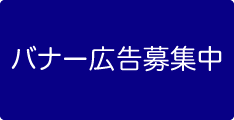同一ほ場におけるカキ幼果のセシウム-137濃度の樹間差Differences in Radioactive Caesium-137 Concentrations in Young Persimmon Fruit from Trees in the Same Orchard
1 福島県農業総合センターFukushima Agricultural Technology Centre ◇ 963–0531 福島県郡山市日和田町高倉字下中道116 ◇ 116 Shimonakamichi, Takakura, Hiwada, Koriyama, Fukushima 963–0531, Japan
2 国立研究開発法人農業・食品産業技術総合研究機構東北農業研究センター農業放射線研究センターTohoku Agricultural Research Center, NARO ◇ 960–2156 福島県福島市荒井字原宿南50 ◇ 50 Harajukuminami, Arai, Fukushima, Fukushima 960–2156, Japan
3 国立研究開発法人農業・食品産業技術総合研究機構果樹茶業研究部門Institute of Fruit Tree and Tea Science, NARO ◇ 305–8605 茨城県つくば市藤本2–1 ◇ 2–1 Fujimoto, Tsukuba, Ibaraki 305–8605, Japan
4 福島県農業総合センター果樹研究所Institute of Fruit Tree Science, Fukushima Agricultural Technology Centre ◇ 960–0231 福島県福島市飯坂町平野字檀の東1 ◇ 1 Dannohigashi, Hirano, Iizaka, Fukushima 960–0231, Japan
5 国立研究開発法人農業・食品産業技術総合研究機構食品研究部門Food Research Institute, NARO ◇ 305–8642 茨城県つくば市観音台2–1–12 ◇ 2–1–12 Kannondai, Tsukuba, Ibaraki 305–8642, Japan
6 農研機構本部Headquarters, NARO ◇ 305–8517 茨城県つくば市観音台3–1–1 ◇ 3–1–1 Kannondai, Tsukuba, Ibaraki 305–8517, Japan



